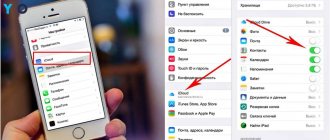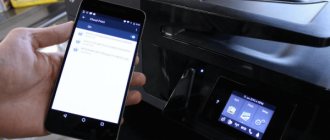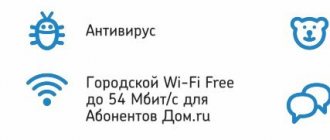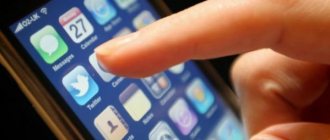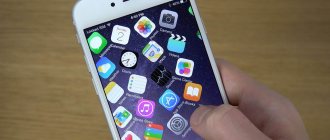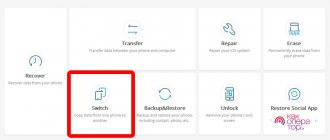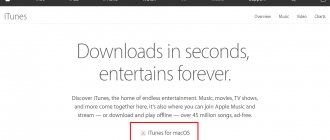Methods for transferring information from an Android phone
Since the replacement of smartphones among users is a frequent occurrence, a lot of ways to transfer information have appeared, conditionally divided into three categories:
- Standard tools.
- Third party services.
- Manual transfer.
The first category includes built-in tools implemented by the operating system or user interface developer. For example, the services of the owner of the Android OS, Google, are pre-installed on all devices that have passed certification. Or large companies developing their own shell. For example, Xiaomi with the Mi Cloud service pre-installed in MIUI firmware.
Third-party services include mobile and desktop programs created by Android device manufacturers, private companies or application developers.
The manual method involves data transfer with in-depth user participation . Using tools not included in the first two categories.
Important! The methods in each category are focused on transferring a specific type of data. And the preferred method is influenced by ease of interaction, type, quantity and volume of information transferred.
Using cloud storage
This method is similar to the Google Drive transfer method, but you can use another cloud storage app instead.
List of storages:
- Google Drive
- Yandex Disk
- Mega
- Cloud Mail.Ru
- DropBox
- OneDrive
There are many more cloud storages; we have named the most used ones. Their difference is in the provision of free GB and tariffs for them.
Transfer algorithm:
- Download the required cloud storage for two phones
- Open the application on your old smartphone and register
- Upload the necessary files to the cloud via Explorer or the application itself
- We log in to the new device in the cloud storage.
- All downloaded files will open in front of you, which will need to be transferred to the internal memory of the new phone.
- We repeat these steps until all the necessary information is transferred.
Life hack: You can use all cloud storages. Each of them provides a limit of free GB. Upload different files to each cloud storage, so you can transfer all the necessary information to your device without paying extra for additional gigabytes.
How to transfer data from android to android using standard tools
The operating principle is based on automatic backup. In accordance with the configured settings and if the Internet is available, the data is synchronized and sent to the server for storage automatically. And since the content is tied to your account, you just need to enter your login and password on the new device to receive a copy of the content.
Automatic backup will allow you to transfer data and settings: phone book contacts, application installations, calendar events, passwords, browser history, etc.
Media files can only be copied to a cloud drive with a fixed capacity. If you have a lot of videos, music and other massive files on your phone, you will have to buy additional space or use other transfer methods.
Below we will look at three ways to transfer data using automatic backup.
Method 1. Transfer data from Android to Android via Google services
Important!
- To create a backup copy, Google services and an account are required.
- Recovery options are affected by the device type and Android version. File migration is not possible or only partially possible if data is being migrated from a later version of the OS to an earlier version. For example, from Android 7.1 to 4.1 or 5.0, etc.
- For multimedia files, Google Drive cloud storage is used. The basic disk capacity is 15 GB.
- Application settings are copied to the server no more than once a day. In this case, you need to connect your Android device to the power supply and Wi-Fi. Also, don’t use your phone for a couple of hours. If the device is inactive for 14 days, Google will delete application data after 60 days. The period is automatically extended when activity resumes.
- Backup for some applications is not supported because the developers have not enabled this option.
Instructions
1. Create a Google account if you haven't already. Go to settings, open the “Accounts” section. Then choose to add a Google account. To complete registration, follow the account creation wizard and enter the required information.
2. Activate backup. In most devices without a modified interface, the parameter is called “Restore and reset”. Activate the option, and also familiarize yourself with the type of data that will be saved. Next, select an account.
Important! To restore the contents of the information on a new Android phone, you need to activate the “automatic recovery function”.
3. For multimedia files, go to Google Drive, click the “Add” button and specify the path to the files. Automatic uploading of photos and images, available in the settings section.
RELATED TOPICS
Backing up apps in Android 6 Marshmallow
How to recover deleted files on Android
Method 2. Transfer data from Android to Android using Mi Cloud
Important!
- The service is available only in MIUI firmware.
- To use Mi Cloud, you must first register a Mi account.
- The basic disk capacity is 5 GB.
Instructions
- Create a Mi account if you haven't done so before. Direct link to the registration page.
- In system settings, open the Mi account section.
- Accept the user agreement and allow access to the service.
- Enter login and password.
- Select the type of data you want to save, and then create a backup copy.
Method 3. Creating a local backup on MIUI firmware
Important!
Local backup does not save multimedia files: music, videos, photos, voice recorders, etc.
Instructions
- Open system settings.
- Select Advanced, then “Backup and Reset”.
- Then – the “Local backup” item.
- In the new window, click on the “Backup” button and select the type of data that you want to save. The “system settings” item includes: Wi-Fi network passwords, messages, call log, etc. The “applications” item—data from third-party applications.
- For convenience, set a schedule to automatically create backups.
- After some time, which is influenced by the amount of information being backed up, a folder with data will appear in memory. Path: Miui – backup – AllBackup. Transfer the folder to the cloud or to your computer so that you can later copy it to a new device.
- To restore files, you should visit the section for creating backup copies, select a backup and click on the “restore” button.
Preparing devices for migration
Checking the battery level on two devices. We connect two smartphones to WI-FI, the procedure for copying data via the mobile Internet eats up a lot of traffic for which a fee is charged.
We check whether there is a link to a Google account on the old smartphone. For this:
- Open settings;
- Go to the “Google” section and look for your account.
If you don't have an account, you can add one by entering the required data.
Without an account, copying information to a new device will not work! To add it, just register in the Play Market. We indicate your full name, login, password, email address ending with the prefix: @gmail.com (you can enter another email if you have one)
Transferring data from one Android to another Android using third-party services
Transferring information, including photos, videos and music, is carried out using a utility from a specific manufacturer: Motorola Migrate, Sony Xperia Transfer Mobile, HTC Transfer Tool, LG Mobile Switch or Samsung Smart Switch. Or programs written by application developers, for example - CLONEit - Batch Copy All Data.
The listed programs work on a similar principle. The user selects the data type, and then a new Android device with the same program. Next, the application creates a copy of the files and sends it to the new phone.
RELATED TOPICS
Best Data Transfer Apps for Android
The best services to sync photos on Android
Best Apps to Record Smartphone Screen
Method 1: Transfer files using the Motorola Migrate app
- Download the app on your old and new phone.
- Launch the program and establish pairing between the two devices. Using your old device, scan the QR code on your new phone.
- Select the type of data you need to send, and then choose your preferred sending method.
- Wait until the files being transferred are finished.
Important! The Motorola Migrate utility is not supported on Android 7 and above.
Method 2. How to transfer data from Android to Android using CLONEit
- Install and then launch the apps on both phones.
- Activate Wi-Fi. On the old phone, click on the “send” button, and on the new one, “accept”.
- Wait for both Android devices to establish a connection.
- Select the files required to upload and then the appropriate button to confirm
Using PC
If you are more comfortable using a PC, this method is for you.
Algorithm of actions:
- We connect the old device to a PC or laptop via a USB cable.
- Open Explorer and copy all the necessary files to your computer.
- We disconnect the old phone and connect the new smartphone to the PC via USB.
- We select the necessary files from the PC memory and copy them to the memory of the new device.
The first time you connect the smartphone to the PC, the driver installation procedure will be carried out. This happens automatically and takes a few minutes.
If the USB cable does not work, there is a way out. We use wi-fi and additional software.
- Download the MyPhoneExlorer utility to your smartphone and PC on the official website or through the Play Store.
- We launch the application on all devices and wait for the pairing to complete.
- Using selection, we transfer the necessary files from the Android smartphone to the PC.
- In a similar way, we connect the new smartphone to the PC and carry out the transfer in the opposite direction.
The advantages of this method are that in one procedure you can comprehensively transfer all files to a new device. The transfer supports all file types!
How to transfer data from android to android manually
Manual file transfer is useful when you need to transfer a specific type of information or a selected group of files. For example, music, videos or application data. Moreover, sending directly to a new Android device, cloud storage or computer is available.
RELATED TOPICS
How to synchronize Android with computer: 4 ways
What is synchronization in an Android phone?
Method 1: Back up applications using Titanium Backup
The program allows you to selectively or completely create a copy of installed applications, or save only the data and then restore it on a new device. In this case, you must obtain ROOT rights on both smartphones. For details, visit the corresponding section of our resource.
Instructions
- Open Titanium Backup on your old Android device.
- Click on the "Backups" tab.
- Select the application you are interested in and click the “Save” button in the new window. The backup will start automatically. For the duration of creation of the r.k. influenced by the amount of data.
- To transfer data, hold down the application item until a window with actions appears. Select "Transfer latest backup" and then the data type.
- In the next window, select the desired method for transferring files: email, cloud drive, etc.
- If you need to make multiple backups, check the required applications. For a complete backup, visit the “Batch Actions” section in the menu.
- By default, backups are saved in the Titanium Backup folder on the internal drive. Move the folder to the new device, then go into the program and restore the data of the necessary programs one by one. Or, through the “Batch Actions” section, restore all applications.
Important! Some programs are sometimes restored incorrectly due to hardware and software differences between the new and old smartphone.
RELATED TOPICS
Backing up data in Android and creating it using Titanium Backup
Preparing an Android smartphone to reset to factory settings
How to backup Android firmware
Method 2: Copy files to cloud storage
Cloud storage services offer 5-50 GB of free disk space. Sometimes this is enough to temporarily or permanently store some data, including photos, music or videos. To choose the optimal service, we recommend reading the relevant material below.
RELATED TOPICS
Best cloud storage - TOP 15
Cloud storage
Instructions
- Activate Wi-Fi Internet on your phone.
- Install your preferred cloud storage service client.
- Register an account and/or log in.
- To copy content, in the application, click the “Add” button, and then mark the necessary files.
- Install a similar client on your new phone and log in. Then go to the application and download the necessary information.
Alternative option
Select the required files, click on the “Share” button. In the new window, select the cloud drive and confirm the download.
Method 3. Transferring data to a computer
A convenient method of transferring data in case the old device is damaged - the screen is broken or the sensor does not respond.
Instructions
- Connect your old phone to your PC using a USB cable.
- In the “USB configuration” section, select MPT.
- Wait until the removable drives are displayed. Then copy the necessary data to your computer.
- Then connect your new Android device and transfer the previously copied information.
RELATED TOPICS
The computer does not see the phone via USB
The computer does not see the iPhone
Why doesn't my tablet connect to wifi?
Method 4. Transferring data to a computer via a Wi-Fi router
Instructions
- Install the Moto File Manager app on your old phone.
- Connect your smartphone and computer to the Wi-Fi network.
- In the hidden left panel on your phone, select remote control, and then “connect.”
- Enter the displayed address on your PC in the address bar of Explorer.
- Transfer content from your old smartphone to your computer.
- When finished, stop the connection on the old phone, and then connect the new device to transfer data.
Method 5: Send files using NFC
Important! Data exchange is possible provided that the old and new smartphone are equipped with an NFC module.
Instructions
- Open the system settings of both phones. Expand hidden sections to view additional items.
- Activate the NFC module and the Android Beam function to be able to exchange data.
- Select the files you need to transfer, such as photos. Tap the Share button and then select via NFC.
- Place the old phone against the new one. If necessary, confirm receipt of the files.
Method 6: Transfer files using Bluetooth
Instructions
- Open the settings of both devices.
- In the Bluetooth section, turn the switch to active.
- On your old phone, prepare files to send, select and click on the “Share” button.
- In the new window, select "Bluetooth".
- On the new device, enable discovery.
- Wait on the old phone for the name of the new device to appear, and then select the device.
- If necessary, confirm receiving files on your new Android smartphone.
Method 7. Transferring files using a memory card
If your old and new smartphone support installing MicroSD cards, you just need to transfer the information to the drive and then install the card in the new device.
Important! Do not use this method if the Adoptable storage function was activated on your old phone.
Instructions
- Insert a memory card into your old device.
- Open your file manager.
- Go to the internal memory of the device, select the necessary data and transfer it to the memory card.
- When finished, remove the memory card and install it in a new device. If necessary, use a file manager to move information from the MicroSD card to the internal partition of the phone.
Method 8. Transferring files using an OTG adapter
If your new or old device does not support installing a MicroSD card, you should use an OTG adapter to connect the drive externally.
Instructions
- Insert the MicroSD card into the Card reader, and then into the USB connector of the OTG adapter.
- Connect the assembled structure to the old phone.
- Open a file manager and transfer data to a removable drive.
- When finished, disconnect the drive and connect it to the new phone. Open the file manager and transfer the data to the internal memory.
Method 9. Use Android applications to transfer data
Another effective method of transferring information is data transfer programs. It works provided that both devices have working Wi-Fi and/or Bluetooth modules.
Instructions
- Install one of the programs from the article “Android applications for data transfer” on both devices.
- On the sending device, select the files, then click on the “Send” button or the button with the corresponding function.
- On the receiving device, click on the accept button. Or use the QR code.
- Next, specify the recipient on the sending device. In a little time, the information will be successfully copied to the new device.
Manual transfer
There are many options for manual copying. Choose the one that is most convenient for you.
Transfer via SD card. Not all information is brought in this way. But the method is very simple and can be used even when the new device does not support external drives. A more detailed article on this topic is here.
Before transferring, you need to transfer all the necessary information to the SD drive. This can be done through the built-in explorer on your phone.
- Open File Explorer and select the files you want to transfer
- To select these files, click on them and they will be highlighted. After that, click on the three dots and transfer or copy to the SD card. The transfer time depends on the quality of the SD card and its price.
To export contacts to a memory card, you need to open the corresponding section. Select the numbers you need to transfer by pressing your finger on them. Select the “Export to external storage” section
Applications cannot be transferred.
When all the data is on the drive, you can insert it into a new device and transfer these files from the SD card to the internal memory. You don't have to transfer it to internal memory. This procedure is also performed in Explorer.
What to do if only your old smartphone supports an SD card slot.
To do this you will need two devices:
· Card reader.
· OTG adapter.
Algorithm of actions:
- Insert the SD card into the card reader.
- We connect the card reader to the OTG adapter.
- We connect the adapter itself to the device that will receive the files.
- Open File Explorer on your phone and select the “external storage” section.
- We select the necessary files and transfer the data.
Application selection criteria
When choosing any mobile application, you must first of all take into account the smartphone model. There are different programs for different platforms - iOS, Android and Windows, which, however, are similar in operation and pursue the same goals.
Sometimes, in order to transfer any information to a third-party gadget, it is necessary to download a program not only to the transmitting device, but also to the receiving one. This makes the process more labor intensive, but still easier than transferring data from your phone to a PC using a USB cable or wireless network, and then back to another phone.
Each product has its own differences: additional features, functions, speed of operations. To choose the most capacious and effective application, you need to study its main characteristics and read customer reviews that are always present on the online market. So, to understand how to choose the best application and avoid making mistakes when choosing, you need to know the following about it.
Memory footprint
Any phone has a limited amount of internal memory, it can vary from 2 to 32 GB and above. The program for transferring contacts should not take up a lot of space, since it will not be used daily, but the amount of free memory is extremely important for the fast operation of the device. The more the program weighs, the more it “takes away” the processor’s “power” to perform operations; the gadget begins to “slow down” when opening other utilities. With a small program volume, there is no need to constantly clean the space and remove the old for the sake of the new. Besides, who needs a constant pop-up reminder about low RAM?
Price
All products in the Google Play Market and Apple Store are divided into paid and free. Each user chooses what appeals to him most, the choice is often based on the tasks that the program must perform. Based on price, you can find the most inexpensive and budget-friendly options, or you can choose the free version, which will perform fewer operations but will cope with transferring the phone book.
Availability of additional functions
Not all users need the program to perform several tasks simultaneously; as a rule, they only need a solution to one main issue - how to quickly copy contacts and how to transfer contacts to a SIM. However, products that can transfer not only numbers to a SIM card, but also files, can be very useful in the future and will not need to be deleted and then downloaded again. Many latest versions of programs are capable of doing a huge number of useful things: making daily backups, sending information to the cloud, sending all necessary documents as an archive, monitoring calendar events, and much more.
Interface
The interface, that is, the product shell, is a very important criterion. With its help, we understand how the program works, change some parameters and, in general, see how its functions work. Part of the interface also includes design and language parameters, which provide for the presence of Russian or English. Some software products have special offers for the user, for example, a huge selection of wallpapers to indicate numbers, background pictures, special sound signals (alerts), and an interesting ringtone.
Availability
Most programs are available in the manufacturer's official stores - Google Play and Apple Store. For Windows-based smartphones, products are downloaded from the same Google Play. However, some of them are not available in the market and must be searched manually on the Internet on special software distribution sites. Such a program may be in no way inferior to its official competitors and even be more productive, but you should understand that downloading files from third-party resources often ends with the appearance of a virus in the system, which is then difficult to get rid of.
Specifications
Before downloading the program, you need to check whether its minimum technical characteristics are suitable for the phone. An application based on Windows OS will never work on an iPhone, nor will it work if the software version, amount of memory and phone model do not match. Some software products are universal and can be suitable for any phone model, which is their incomparable advantage.
Customer rating in the store
The ratings of other users, as well as recommendations and tips for using the application are very important, because only they will be able to show all the pitfalls during operation. By carefully studying the comments of other people, it is easy to understand whether this program meets all the requests or whether it is better to choose another option.
Via Bluetooth
Many people remember how, in the absence of the Internet in the early 2000s, people used an infrared port or Bluetooth connection to exchange data.
Nowadays, this method of transferring data from one smartphone to another looks outdated, largely due to the low transfer speed. But if the previously presented methods did not help, then using Bluetooth will be one of the last options.
Bluetooth is available on all smartphones. It is almost impossible to find exceptions. But the connection is now used to connect a wireless headset or smart watch.
To transfer data from Android to Android you will have to perform the following algorithm:
- Enable Bluetooth and visibility on both devices by clicking on the corresponding icon in the notification shade.
- Select the necessary files for transfer on the sending smartphone.
- Confirm receipt of data on the recipient phone and wait for the operation to complete.
Due to the low speed of file transfer via Bluetooth, only the most patient people will be able to completely copy all the information. Sometimes the process takes several hours when we are talking about only 1 gigabyte of data.
Therefore, it is recommended to use Bluetooth only for copying small files, for example, numbers from a notebook.
Table of contents
Via NFC
NFC most often used in smartphones to make contactless payments in stores. But if the sensor allows you to carry out transactions, then it can handle the transfer of other data. True, the speed when transferring via NFC is even lower than via Bluetooth .
And one more important note: not all smartphones are equipped with a sensor. As a rule, it is installed in middle and flagship class models.
If both Android devices have NFC, then you need to take a few steps:
- Go to settings and activate the sensor on both smartphones.
- Enable Android Beam feature in the same menu.
- Select the necessary files on the sending device through the selection, click on the “Share” button and select NFC as the transfer method.
- Bring the recipient smartphone as close as possible and wait for the copying to complete.
As with Bluetooth, NFC will only be useful when transferring a small amount of information, such as notebook data. It is not suitable for transferring multimedia files.
Table of contents
